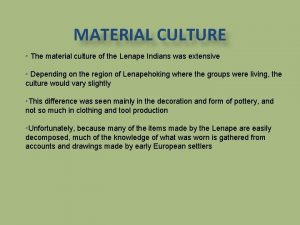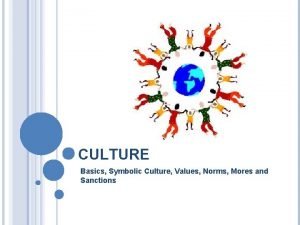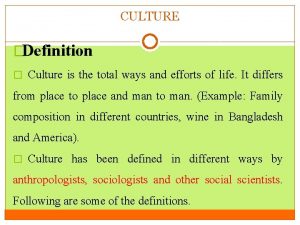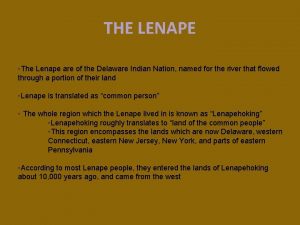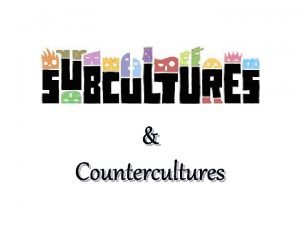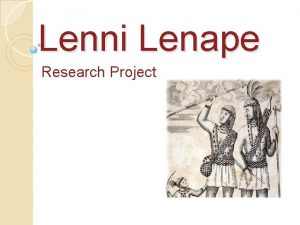MATERIAL CULTURE The material culture of the Lenape












![CANOES DUG-OUT ◦Dug-out canoes were made from oak, pine, sycamore, yellow poplar [ tulip] CANOES DUG-OUT ◦Dug-out canoes were made from oak, pine, sycamore, yellow poplar [ tulip]](https://slidetodoc.com/presentation_image_h/8b22f8fc6f3e23330f846a94c147dbe4/image-13.jpg)
- Slides: 13

MATERIAL CULTURE ◦ The material culture of the Lenape Indians was extensive ◦ Depending on the region of Lenapehoking where the groups were living, the culture would vary slightly ◦This difference was seen mainly in the decoration and form of pottery, and not so much in clothing and tool production ◦Unfortunately, because many of the items made by the Lenape are easily decomposed, much of the knowledge of what was worn is gathered from accounts and drawings made by early European settlers

LENAPE DRESS ◦The clothing of Lenape Indians was, for the most part, rather simple. ◦They utilized materials available to them. ◦The cloth was generally made of tanned deer or elk skin. ◦If decorated, it was done so with dyed porcupine quills, shells and, after European contact, glass beads ◦The amount of clothing worn by the Lenape would vary depending upon the season

LENAPE DRESS MEN AND BOYS Clothing ◦As mentioned earlier, the amount of clothing worn varied depending upon the weather and season ◦In warmer weather, men and boys would wear a leather breechcloth, which was folded between the legs. It was secured at the waist with a leather band or snakeskin belt. Most Lenape went barefoot in warmer weather, but soft soled moccasins with ankle flaps, as well as braided corn husk shoes would be worn when it was a bit colder. Boys around the age of six and younger were allowed to run about naked if the weather permitted. ◦In colder weather, the amount of clothing increased. Pelts of wolf, panther, deer, beaver, raccoon, bear etc… would be pinned or sewn together. In more extreme weather, the fur would face inward, in less extreme weather, the fur would face outwards. Leggings made of deer and elk skin were worn, along with winter moccasins which were made of bear pelt. These boots would be made with the fur facing inward

LENAPE DRESS MEN AND BOYS Decoration ◦Men would use many different materials to produce pigments to paint streaks, lines, circles and designs on their faces and bodies in. ◦The colors Lenape were able to produce were red, yellow, black and blue ◦The substances used to produce these colors were: yellow ocher, red ocher, pokeberry, bloodroot, crushed shale, soot and charcoal ◦The Lenape men would grease their hair with bear fat. This added shine, and may have also been used to show a bit of social status ◦A common practice of Lenape men was to cut the helices [outer rim] of the ears, which created a loop from which ornaments could be hung ◦The septum was occasionally pierced to hold a shell, bone or dyed porcupine quill ◦Men would sometimes tattoo their arms, chest, legs or face with birds, snakes, animals or geometric designs. ◦This was only done to commemorate a heroic deep or noteworthy action ◦Tattoos were seen as being marks of distinction

LENAPE DRESS WOMEN AND GIRLS Clothing ◦As with men and boys, women and girls wore less clothing in the warmer months than they did in the cooler ones ◦ In warmer weather, women and girls would wear a simple leather wrap skirt, that reached from the waist to a little above the knees. This skirt was secured at the waist with a belt made from either a leather band or a snakeskin. These skirts were oftentimes elaborately painted and decorated. Like the men and boys, Lenape women and girls often went barefoot, and would wear the same type of shoes as the men if it were a bit cooler. ◦ In colder weather and winter, women and girls would add fur cloaks, leggings and moccasins to their wardrobe. Decoration ◦For decoration, women would wear ◦Pendant necklaces, earrings, armbands, combs made of bone, and head rings and neck rings made from deer hair coils which had been dyed red.

LENAPE DRESS

LENAPE DRESS TANNING ◦Tanning was an important, and rather important process, without which, the hides would go bad. ◦To tan hides, the skin would be stretched onto a frame or pegged into the ground. If the hair was to be removed, the skin was soaked in water until the hair was easy to take out. Next, all the remaining tissue, fat and flesh would be scraped away using scrapers made of stone or bone. Occasionally, a mash would be made of cooked brain and liver and spread onto the skin. The skin was left to dry over night, and the next morning the remaining moisture was wrung out. The remaining paste would then be scraped off. The skin was then placed back on the frame to finish drying and bleach in the sun. The final step was done to soften the hide and make it more pliable. This was done by either rubbing it across a taught rope, or by placing it on a log and rubbing it vigorously. ◦If the tanned hide was to be used for clothing, it was cut to appropriate shape and sewn together. ◦To enable sewing, specifically spaced holes would be punctured in the skin by using a bone awl or a stone perforator. This made it possible to string thin leather cord or sinew through it.

LENAPE POTTERY ◦Another aspect of Lenape material culture was the pottery they made ◦Pottery were used for cooking meals, as well as storing food ◦This was a task that all Lenape women and girls knew how to do ◦The pottery was made from clay gathered from local sources ◦While very similar, the Munsee speaking and Unami speaking Lenape had different styles of pottery ◦

LENAPE POTTERY ◦ Clay was gathered from stream and river beds, along shore lines and from local deposits, and was processed to make it suitable to work with. ◦To do this, the clay was dried out, pulverized and sifted through baskets to remove impurities. Grog [a temper] was added to this powdered clay. Grog could be made of ground shell or stones. This was thoroughly mixed and water was added a bit at a time until the clay reached the desired consistency. ◦There were two methods to forming a ceramic vessel ◦One way create a clay pot was to use the coil method. This was done by making long “logs” out of the clay by rolling it. These were then made into rings and placed one ontop of the other. The outside [and later, the inside as well] was smoothed, by hand or by using a bone tool ◦Another method for constructing a pot is the pinch method. In this process, a Lenape woman would start with a ball of clay of desired size, create one hole in the middle using her finger, and pinch the outsides upwards, making sure to keep a uniform thickness.

LENAPE POTTERY ◦After the shape had been formed, and the pots were dried out a bit to make them a bit more stable, designs were etched into the rims, collars, and occasionally the body. These designs were often geometric, though they occasionally contained effigy faces or animals. ◦ Before being fired, it was important that the clay pots first had to be completely dried. ◦If there were any amount of moisture left in the clay, it would turn to steam and explode the vessel during the firing process. ◦ After the pots were thoroughly dried, they were clustered together, and covered with dried corncobs, bark, sticks or other flammable material. The fire was lit and was kept constantly burning until the pots glowed with heat. The fire was then let to die out and the pots cool down.

TOOLS ◦All of the tools used by the Lenape Indians were made by hand ◦Most of these tools were made from fine grained lithics, but some were made from bone, antler and shell ◦No tools the Lenape Indians used were made from metal ◦Metal axes obtained from the Europeans were often times ground down and used for other purposes, such as ornaments ◦ The most common woodworking tool of the late Woodland era was the Celt, which was often times made from granite and basalt ◦ Other common tools the Lenape used were chisels, drills, awls, scrapers, engravers, and of course, projectile points

CANOES ◦ Canoes were a very important part of Lenape culture. ◦Without which, the Lenape Indians would not have been able to travel up and down river as easily, cross streams or fish as well. ◦ There were two types of canoes used by the Lenape ◦The first, and more common of the two, is a dug-out canoe ◦ The second type is a bark canoe Birch Bark Canoe Dug Out Canoe
![CANOES DUGOUT Dugout canoes were made from oak pine sycamore yellow poplar tulip CANOES DUG-OUT ◦Dug-out canoes were made from oak, pine, sycamore, yellow poplar [ tulip]](https://slidetodoc.com/presentation_image_h/8b22f8fc6f3e23330f846a94c147dbe4/image-13.jpg)
CANOES DUG-OUT ◦Dug-out canoes were made from oak, pine, sycamore, yellow poplar [ tulip] and chestnut ◦The best tree to use was the yellow poplar, which was referred to by the Lenape “Muxulhemnshi”, which translates to “tree from which canoes are made” ◦ It is said that one man could made a dug-out canoe in 10 -12 days ◦ A dug-out could be as large as 40 -50 feet, which would hold up to 40 men BARK ◦Bark canoes were made from tulip, elm and birch barks ◦ Tulip and elm bark did not last as long as the paper birch bark ◦ The roots of the black spruce were used to sew together the large pieces of bark
 Lenni lenape pottery
Lenni lenape pottery Lenape tribe food
Lenape tribe food Lenape vision quest
Lenape vision quest Cultural relativism
Cultural relativism Non material culture examples
Non material culture examples Material and non material culture examples
Material and non material culture examples Geometric symbol
Geometric symbol Variance analysis meaning
Variance analysis meaning Useful materials meaning in science
Useful materials meaning in science Examples of informal norms
Examples of informal norms Examples of symbolic culture
Examples of symbolic culture Non material culture definition
Non material culture definition Describe lawn culture and surface plating
Describe lawn culture and surface plating Folk culture and popular culture venn diagram
Folk culture and popular culture venn diagram
